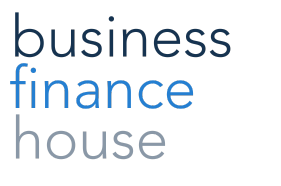When it comes to applying for a business loan, interest rates are one of those things you can’t afford to overlook. Whether you’re borrowing to invest in equipment, fund a new project or just smooth out your cash flow, the interest rate you’re offered plays a big role in how much your loan actually ends up costing you.
Even a small difference in rates can add up to thousands over time, so it’s definitely worth understanding how they work.
What Are Interest Rates and Why Do They Matter?
Interest rates are the price you pay to borrow money. When a lender gives you a business loan, they’re taking on some risk and charging you interest is how they make it worth their while.
That interest is calculated as a percentage of your total loan amount and can be added in a few different ways depending on your loan structure. But whatever the setup, the higher the rate, the more you pay.
Even a 2-3% difference might not sound like much on paper, but over a few years, it can mean the difference between a manageable repayment plan and a financial headache.
Fixed vs. Variable Interest Rates: What’s the Difference?
When you’re shopping around for a business loan, you’ll typically be offered one of two types of interest rate:
- Fixed interest rate: This stays the same for the full term of your loan. It’s predictable and ideal for planning, especially if you want consistent monthly payments.
- Variable interest rate: This can move up or down depending on the Bank of England’s base rate or the lender’s own rate changes. While you might benefit when rates drop, your repayments could also rise unexpectedly.
Choosing a fixed or variable rate really comes down to what fits your business’s cash flow and how much risk you’re comfortable with.

How UK Interest Rates Affect Business Borrowing
In the UK, business loan interest rates are heavily influenced by the Bank of England base rate. When the base rate rises (often to control inflation), lenders tend to follow suit and increase their borrowing rates.
- Rising interest rates = more expensive borrowing. Your monthly repayments will be higher, which could squeeze your profit margins.
- Falling interest rates = cheaper finance. Great news if you’re planning to invest in growth, as loans become more affordable.
Timing really is everything. Keeping an eye on market trends can help you make smarter decisions about when to borrow and what kind of interest structure to go for.
For example, borrowing £50,000 at 6% interest over three years might cost you around £4,770 in interest. But if the rate is 9%, you’re looking at over £7,300. That’s nearly £2,600 extra, which could’ve gone towards stock, staff, or savings.
Tips for Managing the Impact of Interest Rates
If you’re planning to apply for a loan or already have one, it’s worth being proactive:
Shop Around
Don’t just go with your high street bank. Different lenders offer different deals and business finance brokers can often find better rates tailored to your needs.
Consider Fixing Your Rate
If you think interest rates might rise soon, fixing your rate now could save you money (and stress) later.
Keep Your Credit Profile in Check
Lenders usually offer the lowest rates to the lowest-risk businesses. So keep your accounts tidy, pay your bills on time and keep your debt levels under control.
Plan for Rate Rises
If you’re on a variable rate, build a bit of a buffer into your cash flow planning, just in case your repayments increase.
Interest rates might seem like a dry, technical detail but when it comes to your business loan, they’re anything but.
Understanding how interest rates work and how they affect your borrowing can help you make smarter financial decisions and avoid nasty surprises down the line. Whether you’re applying for your first loan or thinking about refinancing, keep a close eye on the numbers and ask the right questions before you sign.
Reach out to Business Finance House and let’s explore the right funding solutions for your business.





